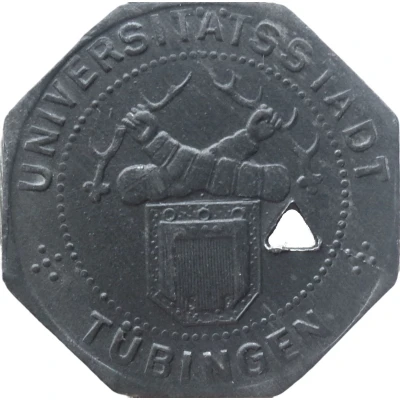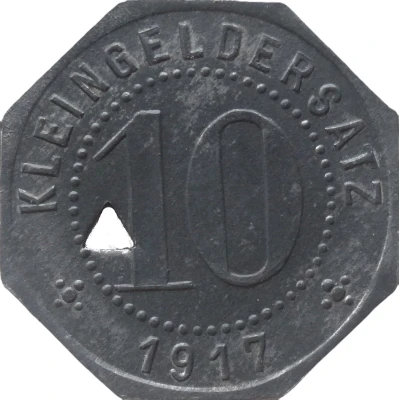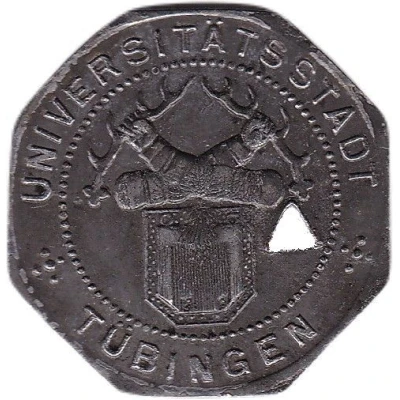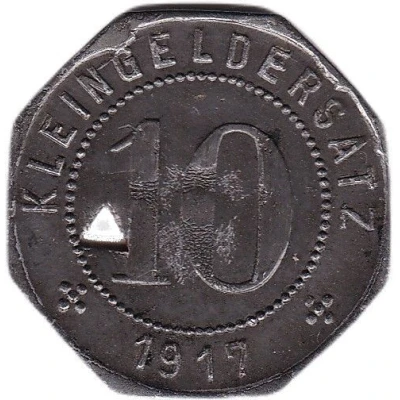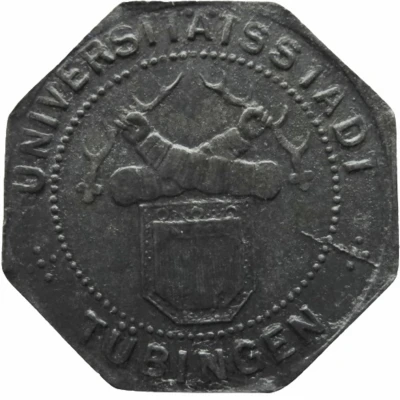
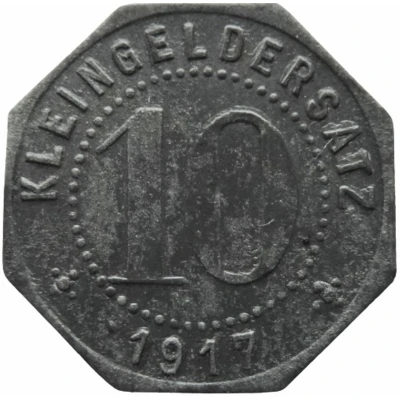

© Willem63 (CC BY-NC-SA)
10 Pfennigs - Tübingen
1917 year| Zinc | 2.45 g | 20.7 mm |
| Issuer | City of Tübingen (Federal state of Württemberg) |
|---|---|
| Emperor | William II (Wilhelm II) (1888-1918) |
| Type | Standard circulation coin |
| Year | 1917 |
| Value | 10 Pfennigs (10 Pfennige) (0.10) |
| Currency | Mark (1914-1924) |
| Composition | Zinc |
| Weight | 2.45 g |
| Diameter | 20.7 mm |
| Thickness | 1.14 mm |
| Shape | Octagonal (8-sided) |
| Technique | Milled |
| Orientation | Coin alignment ↑↓ |
| Demonetized | Yes |
| Updated | 2024-10-04 |
| Numista | N#32166 |
|---|---|
| Rarity index | 86% |
Reverse
Legend circling pearl circle with denomination centered
Script: Latin
Lettering:
KLEINGELDERSATZ
10
1917
Edge
Plain
Comment
Old Funck ref.: 551.2BIssue with triangular hole was listed as F#551.2
Issue without Triangular hole was listed as F#551.3
Interesting fact
One interesting fact about the 10 Pfennigs - Tübingen 1917 coin is that it was issued during a time of economic turmoil in Germany, known as the "Inflationary Period" (1914-1923), when the value of the German mark plummeted, and the prices of goods and services skyrocketed. As a result, the government was forced to produce coins with lower denominations, such as the 10 Pfennigs, to keep up with the rapidly increasing prices. Despite being made of zinc, a relatively inexpensive material, these coins were still considered valuable and were widely used in everyday transactions.
